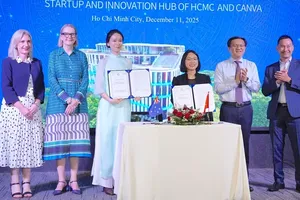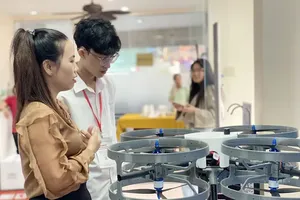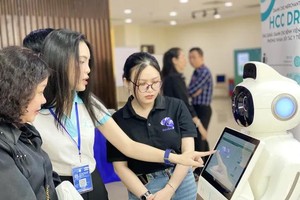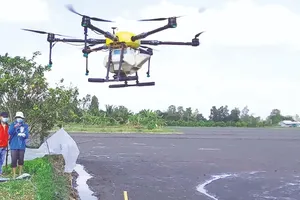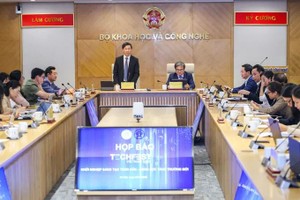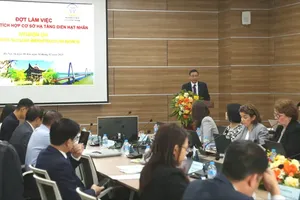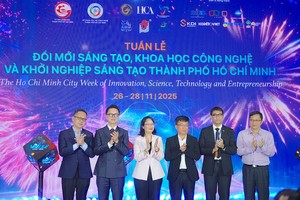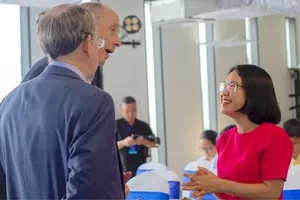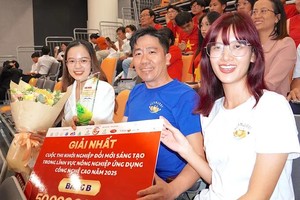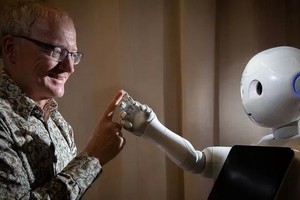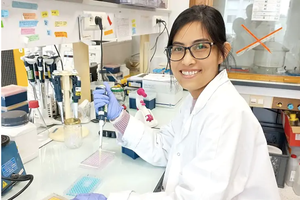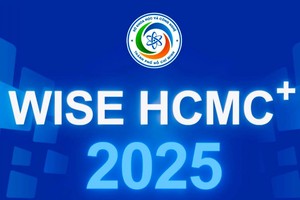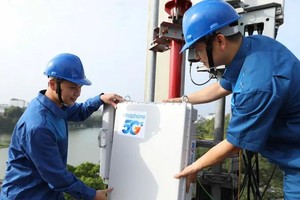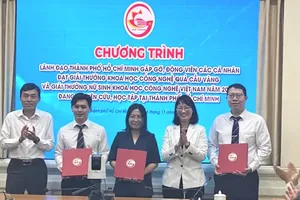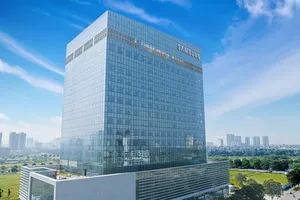 |
Students of Saigon University (HCMC) are developing a 3D printer (Photo: SGGP) |
President Vu Hai Quan first stressed on the obvious relationship between science-technology, innovation and the national growth speed, clearly displayed in such countries as the Republic of Korea, Singapore, and China.
Resolution No.31 of the Politburo about directions and missions for the development of HCMC until 2030 with a vision to 2045 states that many of HCMC’s potentials have not been effectively exploited because the policies to boost science-technology growth and innovation, to attract high-quality human resources have not been brought into full play, and thus cannot create necessary driving forces for the city’s sustainable development.
President Quan then stated that the introduction of a resolution to replace Resolution No.54 is to better adopt two resolutions no.24 and 31 of the Politburo in order to offer more mechanisms and policies, especially the boost for scientific research and implementation, for HCMC to grow. When approved, this new resolution can address problems in research and development activities, forming a critical foundation for the city to attract giant international corporations and investors.
Commenting on what HCMC needs to be able to compete against other major cities in the region as stated in Resolution No.31, he cited Singapore as an example of an ideal place for young startups. HCMC should analyze this example to introduce attractive policies (tax exemption for instance) or mechanisms to welcome such startups as well as scientists coming to pilot their own products, services.
In addition, lecturers and scientists working in universities should be allowed to open spin-off businesses. Adding higher educational institutes into the list of subjects eligible for preferential policies can improve HCMC’s innovative startup ecosystem. This can be done via supplying high-quality human resources and promoting scientific research among students, lecturers, scientists living in the city.
As to orders for academies and universities to train high-quality workers, the President said that HCMC has introduced policies to use its budget as investments in universities and scientific organizations located in the city and for human resources orders to answer the demands of the city’s economic growth. These laborers are talented people who dare to innovate, apply their creative ideas to real life, and face challenges in their startup activities.
Finally, President Quan mentioned the preparation of Vietnam National University-HCM to effectively implement new policies, mechanisms. Resolution No.24 of the Politburo identifies the development direction for VNU-HCM to be one of the leading universities in Asia and the place to attract talents, to spread both professional knowledge and national culture.
Therefore, focused activities of VNU-HCM until 2030 include attracting and properly training talented people, especially in the science-technology field and innovation. Simultaneously, VNU-HCM is accelerating its comprehensive cooperation program signed with HCMC. In particular, it is going to prepare and then implement curricula for high-quality human resources in the aspects of AI and microchip technology. Scientific research projects in these aspects are also promoted for the sustainable development of HCMC.
"Until now, VNU-HCM has 7 projects eligible for the financial policy of HCMC Finance and Investment State-owned Company (HFIC) with the total capital of VND521 billion (US$22.2 million) as well as part of the interest support from HCMC worth over VND74 billion ($3.1 million). When approved, the new resolution makes way for VNU-HCM and HFIC to jointly launch more key projects to serve educational, scientific, and innovative purposes”, said President Vu Hai Quan.
Nguyen Ngoc Son – Standing Member of NA’s Science-Technology-Environment Committee – said that the draft resolution to replace Resolution No.54 has regulations on the limits to the application of controlled testing mechanism for technological solutions. The separated framework for such sandboxes, which is beyond the current framework and applied selectively for novel technologies in Industry 4.0, creates favorable space to test innovative startup ideas. Therefore, the choice of using piloting mechanisms should not be geographically and administratively limited within hi-tech zones or centralized IT zones of HCMC.
Vuong Quoc Thang from the Delegation of the National Assembly in Quang Nam Province stated that it is necessary to introduce more breakthrough policies in training high-quality human resources, attracting talented people, and offering a proper environment for innovative activities, especially scientific ones, in connection with advanced science-technology markets in the region and in the world.
Also, regulations on sandbox mechanisms is essential to demonstrate the leading position of HCMC in the digital economy and society as stated in Resolution No.31 of the Politburo. Meanwhile, HCMC should expand its sandbox activities beyond the scope of the draft resolution, such as piloting ‘novel technology solutions’, ‘products, services, business models based on digital platforms’.
